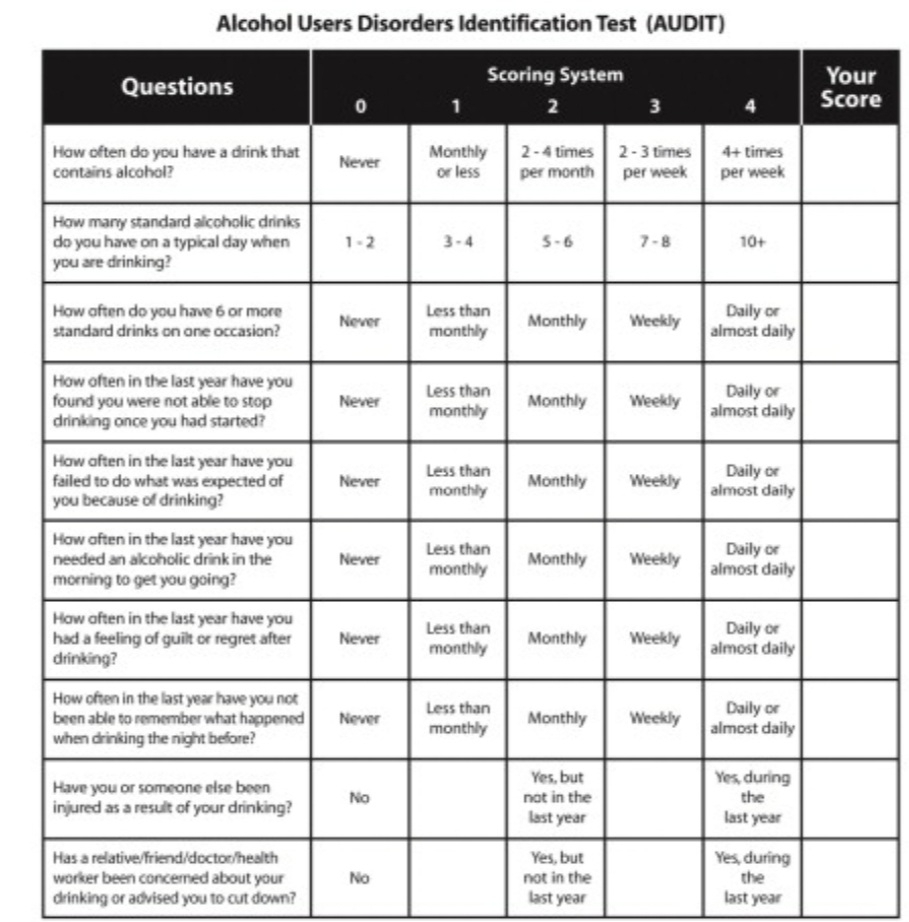neurology
A 40year old male presented with chief complaints of irrelevant talking and decreased food intake since 9days.
He was conscious but oriented to time, person and place only from time to time.
He also had short term memory loss since 9days, where he couldn't recognize family members from time to time
Previously, he had 2-3episodes of seizures, one being one year ago and the most recent being 4months ago. The most recent one, he had developed seizures following cessation of alcohol for 24hours.
1) what is the evolution of the symptomology in this patient in terms of an event timeline and where is the anatomical localization for the problem and what is the primary etiology of the patient's problem?
Ans: The patient is a chronic alcoholic, he drinks about 3-4quarters/day.he had developed seizures following the cessation of alcohol for 24hours it is due to the following reason:-alcohol affects the way in which nerve cells communicate. receptors are specialized proteins on the surface of nerve cells that receive chemical signals from one another. With long-term alcohol consumption, receptors affected by alcohol undergo adaptive changes in an attempt to maintain normal function.
Two important brain communication systems affected by alcohol involve the neurotransmitters:gamma-aminobutyric acid and glutamate.
The GABA system:
GABA is an inhibitory neurotransmitter that helps to regulate brain function by rendering nerve cells less sensitive to further signaling. single doses of alcohol facilitate the inhibitory function of the GABA receptor, contributing to alcohol intoxicating effects. During withdrawal, brain GABA levels fall below normal and GABA activity declines. The combination of reduced brain GABA levels and GABAa receptor sensitivity may be contributed an adaptation to the presence of alcohol. In the absence of alcohol, the resulting decrease in inhibitory function may contribute to Symptoms of nervous system hyperactivity associated with both acute and protracted AW.
The glutamate system:
The major excitatory neurotransmitter in the brain is glutamate, which communicates with three major subtypes of glutamate receptors. Among these, the N-methyl-D-aspartate (NMDA) receptor plays a role in memory, learning, and the generation of seizures. Alcohol inhibits the excitatory function of the NMDA receptor in laboratory studies at concentrations associated with mild to moderate alcohol intoxication in humans. As with the increased inhibitory function of the GABAA receptor, the decreased excitatory function of the NMDA receptor is consistent with alcohol’s general sedative effect. Long-term alcohol administration produces an adaptive increase in the function of NMDA receptors. Acute AW activates glutamate systems. In turn, AW seizures are associated with increased NMDA receptor function. Persistent alterations in NMDA receptor function may potentiate the neurotoxic and seizure-inducing effects of increased glutamate release during withdrawal.
The symptom: irrelevant talking, decreased food intake, tremors, sleep disturbance is due to the following reason: chronic alcohol consumption causes thiamine deficiency due to impaired absorption of thiamine from the intestine, a possible genetic predisposition, inadequate diet, reduced storage of thiamine in the liver and other nutritional deficiencies.
THE PATHOPHYSIOLOGY:
Thiamine, one of the first B vitamins to be discovered also known as Vitamin B1, is a coenzyme that is essential for intricate organic pathways and plays a central role in cerebral metabolism. This vitamin acts as a cofactor for several enzymes in the Krebs cycle and the pentose phosphate pathway, including alpha-keto-glutamic acid oxidation and pyruvate decarboxylation. Thiamine-dependent enzymes function as a connection between glycolytic and citric acid cycles. Therefore, deficiency of thiamine will lead to decreased levels of alpha-keto-glutarate, acetate, citrate, acetylcholine and accumulation of lactate and pyruvate. This deficiency can cause metabolic imbalances leading to neurologic complications including neuronal cell death. Neuronal death in the mammillary bodies and thalamus were implicated in multiple cases of Wernicke encephalopathy studied. Studies involving computed tomography (CT) and magnetic resonance imaging (MRI) of patients with Wernicke encephalopathy revealed lesions in the thalamus with dilated ventricles and volume loss in the mammillary bodies. The lesions are usually symmetrical in the midbrain, hypothalamus, and cerebellum.
The kidneys have an important job as a filter for harmful substances .alcohol causes changes in the function of the kidneys and makes them less able to filter the blood .alcohol also affects the ability to regulate fluid and electrolytes in the body. In addition, alcohol can disrupt hormones that disrupt hormones that affect kidney function .people who drink too much are more likely to have high blood pressure. High blood pressure is a common cause of kidney disease. The increase in levels of urea, creatinine, uric acid leads to uraemic encephalopathy. which causes asterixis.
the deficiency of thiamine and increase in levels of toxins in the body due to renal disease is the primary etiology of the patient's problem.
2)what are the mechanism of action, indication, and efficacy over placebo of each of the pharmacological and nonpharmacological interventions used for this patient?
Ans: I) Thiamine helps the body cells change carbohydrates into energy. It has been used
as a supplement to cope with thiamine deficiency
ii)Lorazepam binds to benzodiazepine receptors on the postsynaptic GABA-A ligand-gated chloride channel neuron at several sites within the central nervous system.it enhances the inhibitory effects of GABA, which increases the conductance of chloride ions into the cell
iii)pregabalin subtly reduces the synaptic release of several neurotransmitters, apparently by binding to alpha2-delta subunits, and possibly accounting for its actions invivo to reduce neuronal excitability and seizures.
iv)Lactulose is used in preventing and treating clinical portal-systemic encephalopathy .its chief mechanism of action is by decreasing the intestinal production and absorption of ammonia.
v)Potchlor liquid is used to treat low levels of potassium in the body.
3)why have neurological symptoms appeared this time, that were absent during withdrawal earlier ? what could be a possible cause for this time?
Due to excess thiamine deficiency and excess toxins accumulation due to renal disease caused by excess alcohol addiction.
4)what is the reason for giving thiamine in this patient?
chronic alcohol consumption causes thiamine deficiency due to impaired absorption of thiamine from the intestine,Thiamine, one of the first B vitamins to be discovered also known as Vitamin B1, is a coenzyme that is essential for intricate organic pathways and plays a central role in cerebral metabolism. This vitamin acts as a cofactor for several enzymes in the Krebs cycle and the pentose phosphate pathway, including alpha-keto-glutamic acid oxidation and pyruvate decarboxylation. Thiamine-dependent enzymes function as a connection between glycolytic and citric acid cycles. Therefore, deficiency of thiamine will lead to decreased levels of alpha-keto-glutarate, acetate, citrate, acetylcholine, and accumulation of lactate and pyruvate. This deficiency can cause metabolic imbalances leading to neurologic complications including neuronal cell death.
5)what is the probable cause for kidney injury in this patient?
The kidneys have an important job as a filter for harmful substances .alcohol causes changes in the function of the kidneys and makes them less able to filter the blood .alcohol also affects the ability to regulate fluid and electrolytes in the body. In addition, alcohol can disrupt hormones that disrupt hormones that affect kidney function .people who drink too much are more likely to have high blood pressure. High blood pressure is a common cause of kidney disease.
6)what is the probable cause for the normocytic anaemia?
alcohol causes iron deficiency or iron overload due its affect on production of new blood cells organs i.e,bonemarrow and the metabolism of iron .alocohol causes a affect on progenitor cells of blood causing decreased WBC .RBC.alochol decreases iron absorption from intestine .
7)could chronic alcohlism have aggravated the foot ulcer formation ?if yes and why ?
yes,As the patient is diabetic the chance of ulcer formation increases .in a patient of chronic alcoholic theimmune system is weak due to the affect on blood cells formation and iron absorption.due to this healing of an ulcer dampens.





